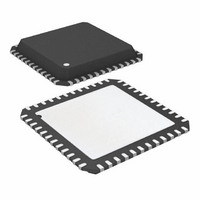AD9229BCPZRL7-65 Analog Devices Inc, AD9229BCPZRL7-65 Datasheet - Page 17

AD9229BCPZRL7-65
Manufacturer Part Number
AD9229BCPZRL7-65
Description
IC,A/D CONVERTER,QUAD,12-BIT,CMOS,LLCC,48PIN
Manufacturer
Analog Devices Inc
Datasheet
1.AD9229ABCPZRL7-50.pdf
(40 pages)
Specifications of AD9229BCPZRL7-65
Number Of Bits
12
Sampling Rate (per Second)
65M
Data Interface
Serial
Number Of Converters
4
Power Dissipation (max)
1.47W
Voltage Supply Source
Analog and Digital
Operating Temperature
-40°C ~ 85°C
Mounting Type
Surface Mount
Package / Case
48-VFQFN, CSP Exposed Pad
Lead Free Status / RoHS Status
Lead free / RoHS Compliant
For Use With
AD9229-65EBZ - BOARD EVALUATION FOR AD9229
Lead Free Status / RoHS Status
Lead free / RoHS Compliant
Out-of-Range Recovery Time
Out-of-range recovery time is the time it takes for the ADC to
reacquire the analog input after a transient from 10% above
positive full scale to 10% above negative full scale, or from 10%
below negative full scale to 10% below positive full scale.
Output Propagation Delay
The delay between the clock logic threshold and the time when
all bits are within valid logic levels.
Second and Third Harmonic Distortion
The ratio of the rms signal amplitude to the rms value of the
second or third harmonic component, reported in decibels
relative to the carrier.
Signal-to Noise and Distortion (SINAD) Ratio
SINAD is the ratio of the rms value of the measured input
signal to the rms sum of all other spectral components below
the Nyquist frequency, including harmonics but excluding dc.
The value for SINAD is expressed in decibels.
Rev. B | Page 17 of 40
Signal-to-Noise Ratio (SNR)
SNR is the ratio of the rms value of the measured input signal to
the rms sum of all other spectral components below the Nyquist
frequency, excluding the first six harmonics and dc. The value
for SNR is expressed in decibels.
Spurious-Free Dynamic Range (SFDR)
SFDR is the difference in decibels between the rms amplitude of
the input signal and the peak spurious signal.
Temperature Drift
The temperature drift for offset error and gain error specifies
the maximum change from the initial (25°C) value to the value
at T
Two-Tone SFDR
The ratio of the rms value of either input tone to the rms value
of the peak spurious component. The peak spurious component
may or may not be an IMD product. It may be reported in
decibels relative to the carrier (that is, degrades as signal levels
are lowered) or in decibels relative to full scale (always related
back to converter full scale).
MIN
or T
MAX
.
AD9229













